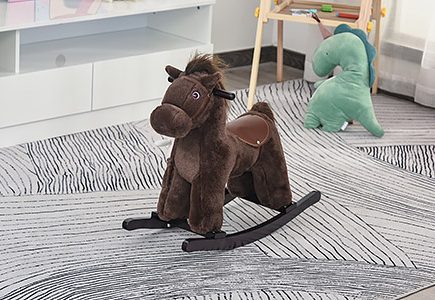
Investing in a gazebo is an exciting way to enhance your outdoor space, but to ensure its longevity and safety, proper anchoring is a must. Without secure anchoring, even a well-constructed gazebo can be at risk of damage from strong winds, heavy rain, or even general wear and tear.
1. Types of Ground and How They Affect Anchoring Choices
The type of ground your gazebo is placed on plays a significant role in determining the best anchoring method. Different surfaces require different approaches to ensure stability and security. Here’s a breakdown of the most common ground types and the best anchoring methods for each:
Soft Ground (Grass, Soil, Sand)
When your gazebo is set up on soft ground, such as grass, soil, or sand, you need anchors that can securely grip the surface. Auger anchors and ground stakes are ideal for these types of surfaces.
- Auger Anchors: These screw into the ground, offering a secure hold that resists shifting.
- Ground Stakes: Easy to install and remove, they are perfect for soft soil, providing a reliable foundation.

For example, if you have a gazebo like the Outsunny 10x13ft Gazebo Party Tent, its design is ideal for soft ground as it comes with ropes and stakes for additional stability. This makes it a great choice for securing your setup and ensuring it remains stable even during light winds.
Hard Surfaces (Concrete, Asphalt, Decking)
For hard surfaces like concrete, asphalt, or decking, you’ll need a more permanent solution. Masonry fasteners or concrete anchors are the most effective methods for these surfaces.
- Masonry Fasteners: Designed for hard surfaces, these fasteners drill into concrete or stone for a secure fit.
- Concrete Anchors: Ideal for heavy-duty anchoring, concrete anchors provide stability on solid surfaces.
Gravel or Loose Soil
Gravel and loose soil can be tricky because they do not offer the same stability as solid ground. In these cases, sandbags or weight bags are the best option for a temporary and flexible anchoring solution.
- Sandbags: Easy to fill and place around the gazebo legs, offering instant weight and stability.
- Weight Bags: Portable and adjustable, weight bags are a great quick fix to keep the gazebo in place.
| Ground Type | Best Anchoring Method | Why It Works |
| Soft Ground | Auger Anchors, Ground Stakes | Secure hold that penetrates the soil for stability. |
| Hard Surfaces | Masonry Fasteners, Concrete Anchors | Provides permanent, solid anchoring for concrete or asphalt. |
| Gravel or Loose Soil | Sandbags, Weight Bags | Easy to adjust and provide a temporary but effective solution. |
2. Primary Methods for Anchoring a Gazebo
Best for Permanent Setups
Concrete anchors are an excellent choice when securing your gazebo on hard surfaces like concrete or asphalt. These anchors provide a strong, long-lasting hold, making them ideal for permanent setups. Whether you’re setting up in your backyard or on a patio, using concrete anchors ensures that your gazebo stays in place no matter the weather conditions.
How to Install Concrete Anchors:
- Drill Holes: Start by drilling holes at each corner of your gazebo where you want to secure the frame. Make sure the holes are deep enough for the anchors to fit snugly.
- Insert the Anchors: Place the concrete anchors into the drilled holes. These anchors are designed to grip the concrete, providing a solid foundation for your gazebo.
- Secure the Frame: Attach the gazebo frame to the concrete anchors. Ensure the frame is firmly attached and that all corners are secured to avoid any movement.
Product Example: Outsunny 10 x 13ft Aluminum Frame Gazebo Canopy Double Tier

For a stable and long-term structure, the Outsunny 10 x 13ft Aluminum Frame Gazebo Canopy Double Tier is a great option. With its aluminum frame and double-tier roof, it’s built to withstand various weather conditions. Paired with concrete anchors, this gazebo offers a secure and reliable setup for your outdoor gatherings or relaxing space. Its durable construction ensures that it remains steady and functional for years to come.
3. Alternative Anchoring Methods
There are several effective methods to secure your gazebo, even if you don’t want to drill or use traditional ground anchors. These alternative solutions are both practical and creative, ensuring your gazebo remains stable without causing permanent damage.
Using Planters to Anchor a Gazebo
For a functional yet decorative solution, consider using planters filled with heavy materials like sand or gravel. Planters can act as both a stylish addition to your outdoor space and an effective anchor to keep your gazebo in place.
- Decorative and Functional: Choose large planters that complement your outdoor décor and fill them with heavy materials to prevent shifting.
Pro Tip: Larger planters provide more weight, making them more effective for securing the gazebo, especially in windy conditions.
By using planters, you can enjoy both aesthetics and stability, ensuring your gazebo remains secure while enhancing the beauty of your backyard.
Masonry Fasteners for Paved Surfaces
If your gazebo is set up on a paved surface such as a patio or deck, masonry fasteners are an excellent choice for anchoring your structure. These fasteners allow you to secure the gazebo without causing any damage to the surface.
- Strong and Secure: Masonry fasteners provide a strong bond, ensuring your gazebo stays in place on solid surfaces.
- Ideal for Permanent Setups: These fasteners are perfect for creating a long-term setup on patios, decks, or other paved areas where you want a sturdy, lasting solution.
Masonry fasteners are a great way to anchor your gazebo securely on hard surfaces, offering peace of mind without compromising your space.
4. Step-by-Step Guide to Anchoring Your Gazebo
Anchoring your gazebo properly ensures it stays stable, safe, and secure, no matter the weather. Here’s a simple guide to help you with the process:
Gather Your Tools
Make sure you have everything you need before you start the anchoring process. The tools you’ll require include:
- Anchors (e.g., concrete anchors, auger anchors, weight bags)
- Drill (for concrete or masonry anchors)
- Hammer
- Rope or clips (for tiebacks or securing)
- Measuring tape (to ensure precise placement of anchors)
Mark Anchor Points
Measure the dimensions of your gazebo and mark where you’ll place the anchors. Typically, these should be placed at each corner to ensure stability. This step ensures that the anchors are evenly distributed for the best support.
Install the Anchors
Depending on your ground type, install the appropriate anchors:
- Concrete Anchors: If your gazebo is on a solid surface like concrete or asphalt, drill holes and insert masonry fasteners or concrete anchors.
- Auger Anchors or Ground Stakes: For soft surfaces like grass or soil, use auger-style anchors or ground stakes.
- Weight Bags or Sandbags: For temporary setups, place sandbags or weight bags around the gazebo legs for stability.
Secure the Gazebo
Once the anchors are in place, attach the gazebo legs to the anchors. Tighten the connection to ensure the structure is securely held in place. Make sure that the anchors are tightly fixed to prevent any shifting or movement.
5. Ensuring Stability in Different Gazebo Sizes
How Gazebo Size Affects Anchoring Needs
The size of your gazebo can significantly impact how much anchoring is required. Larger gazebos catch more wind, which increases the need for stronger anchors.
- Small Gazebos: These can often be secured with fewer anchors, like ground stakes or sandbags.
- Large Gazebos: Larger structures need more robust anchors, such as auger stakes or concrete fasteners, to ensure stability.

The Outsunny 10′ x 10′ Hardtop Gazebo offers durability with a 7mm double polycarbonate roof for UV and water resistance. Its efficient water drainage system prevents pooling, ensuring a dry and comfortable space. Built with heavy-duty metal columns, it provides stability for long-term use. The included curtains and netting add privacy and protection from wind and insects. A great investment for stylish and functional outdoor living!
Adjusting Anchor Strength Based on Gazebo Dimensions
As gazebo size increases, it’s important to use the correct type and number of anchors to match its weight and surface area.
- Proportional Anchoring: Use additional anchors in each corner for larger gazebos, and ensure they are appropriately spaced to handle the structure’s weight.
- Heavy-Duty Anchors: For large gazebos, heavier anchors or even permanent solutions like concrete anchors are recommended.
6. How to Anchor Your Gazebo on Uneven Terrain
Challenges of Anchoring on Sloped or Uneven Ground
Uneven terrain can make it tricky to secure a gazebo. Sloped surfaces or bumpy ground require extra planning and specific anchoring methods to prevent instability.
- Auger Anchors: Ideal for uneven or soft ground, auger anchors screw into the soil, providing a stable hold.
- Ground Stakes: These can also be effective for securing your gazebo on uneven surfaces, but may require multiple adjustments.
Leveling Your Gazebo for Stability
Before anchoring, ensure your gazebo is level. A tilted gazebo can cause stress on the frame and anchors.
- Use Shims or Levelling Blocks: Place these under the legs of the gazebo to level the structure before anchoring it down.
- Check with a Leveling Tool: Use a spirit level to confirm the gazebo is perfectly level, especially on uneven ground.
7. Cost-Effectiveness vs. Long-Term Investment
When choosing the best anchoring method for your gazebo, it’s important to balance both cost and durability. Some solutions are quick and budget-friendly, while others require a higher initial investment but offer long-term stability. Here’s how to weigh your options:
Budget-Friendly Options
If you’re looking for a quick and affordable solution, sandbags or weight bags are a great choice. They don’t require drilling and can be easily moved or adjusted depending on your needs.
- Pros: No drilling, portable, easy to install, and cost-effective.
- Cons: Not the best option for high winds or long-term use.
Long-Term Investment
For those looking for a more permanent and secure setup, auger anchors or concrete fasteners are the better options. These provide a solid, long-lasting foundation, ensuring your gazebo remains stable through any weather condition.
- Pros: Strong, durable, secure, and ideal for permanent setups.
- Cons: Requires drilling and may involve higher upfront costs.

Best Product for Long-Term Stability: Aluminum Gazebo Deck Canopy Double Tier Garden Shelter with Netting and Curtains
For a more permanent setup that pairs perfectly with auger anchors or concrete fasteners, the Aluminum Gazebo Deck Canopy Double Tier Garden Shelter is an excellent choice. Featuring a sturdy aluminum frame and double-tier roof, this gazebo is designed for durability and long-term use. Combined with netting and curtains, it provides both stability and privacy, making it ideal for a long-lasting outdoor shelter. Investing in such a gazebo ensures both functionality and a secure setup for years to come.
8. FAQs
1. My gazebo shifts in the wind—how do I fix it?
Use a combination of auger anchors and sandbags. Auger anchors secure the base into the ground, while sandbags add weight to stabilize the structure, preventing movement during windy conditions.
2. How do I choose the right anchoring method for my gazebo?
The right method depends on the surface you’re setting up on and your need for a temporary or permanent solution. For hard surfaces like concrete, masonry anchors are best for a solid, lasting hold. For soft ground like grass or sand, auger anchors or sandbags are ideal as they are easy to install and remove.
3. Can I use adjustable anchors for a seasonal gazebo setup?
Yes, auger anchors are adjustable and perfect for seasonal setups. These anchors can be installed and removed easily without damaging the ground, making them a great option for users who take down their gazebo at the end of each season. Adjust the depth for secure placement, then remove it when no longer needed.
4. How do I anchor my gazebo on uneven or sloped ground?
You can use adjustable anchors like auger anchors on uneven or sloped ground. These anchors can be screwed into the ground at varying depths, ensuring a secure hold regardless of the terrain. They are flexible enough to provide stability and security on uneven surfaces, making them perfect for sloped yards.
5. Are sandbags enough to keep my gazebo stable in high winds?
Sandbags can help stabilize a gazebo in moderate winds, but in high winds, you may need additional weight or anchoring methods. Adding more sandbags or combining them with other anchors like auger anchors or tension straps will increase stability and reduce the risk of the gazebo being blown over














